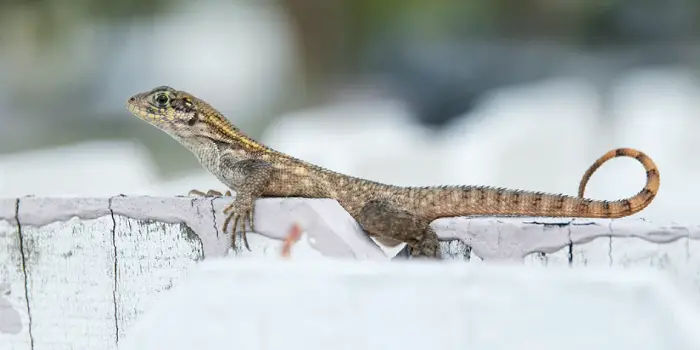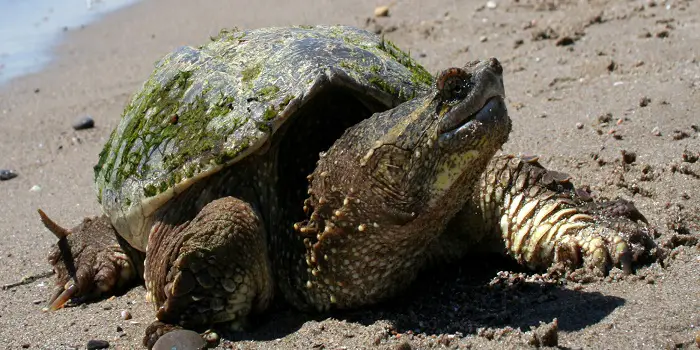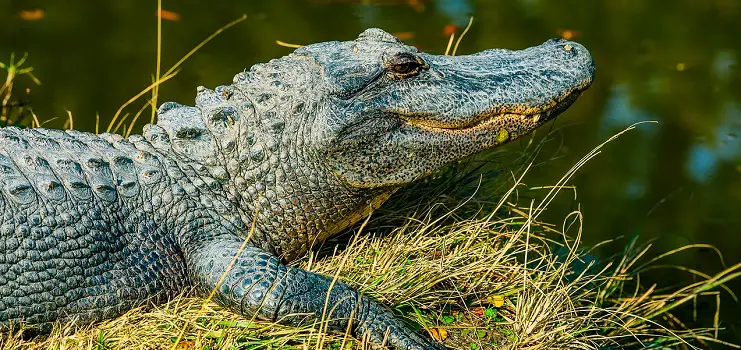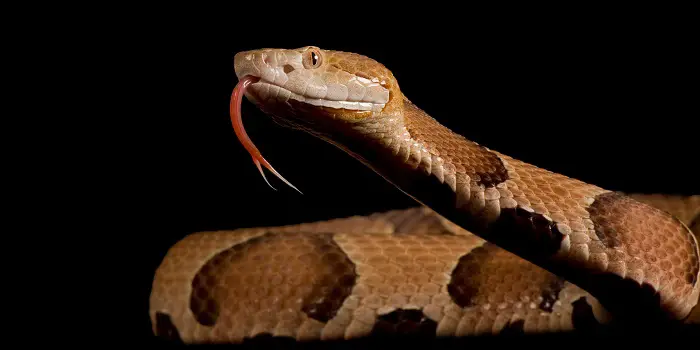
If you live in the southeastern United States, particularly in Florida, Georgia, and Alabama, you may have run across the burrow of a gopher tortoise.
These are creatures that play an important role in the ecosystem of the American Southeast.
Unfortunately, the burrows the creature makes can also tear up your yard and invite other, less desirable species onto your property.
Understanding what a gopher tortoise is, why it does what it does, and how to deal with one if you find it in your yard will help you remove them safely to another location.
What is a Gopher Tortoise?
It is the only tortoise that is located in the southeastern part of the United States.
It is considerably larger than a box turtle, averaging nine to fifteen inches in length.
They also have strong, stumpy legs that they use to create the burrows so they can create shelters for themselves and the eggs that they produce.
You’ll often find such burrows in sandy, upland habitats where the soil is loose enough to allow for digging.
Apart from the burrows, gopher tortoises are generally harmless to humans. This means they pose no threat to you, your family, or your pets.
This means that the more you can learn about the gopher tortoise, the more you can prepare if one or more should arrive on your property.
Facts About Gopher Tortoises
The holes that gopher tortoises create may not be that appealing to you.
But they are an important part of the ecosystem.
The burrows, once they have been used, become the home for a wide variety of other creatures that live in this part of the country.
They include the indigo and pine snakes, diamondback rattlesnake, gopher frog, and even the burrowing owl.
The single leading cause of death for gopher tortoises is being struck by vehicles as they cross the road.
As with most tortoise and turtle species, the gopher tortoise moves about to find food which means that they are likely to cross the road and into oncoming traffic.
Since, like most tortoise species, they are slow and tend to cover in their shells when threatened, this increases the likelihood that they will be struck.
If it is safe to stop and leave your vehicle, you may pick up the tortoise and move it off the road where it was traveling.
However, do not stop or get out of your vehicle in the presence of ongoing traffic.
Because of their importance to the environment and relatively low numbers, the gopher tortoise is protected in most states.
This means that when you find one on your property, simply removing them or covering up their burrows is not allowed.
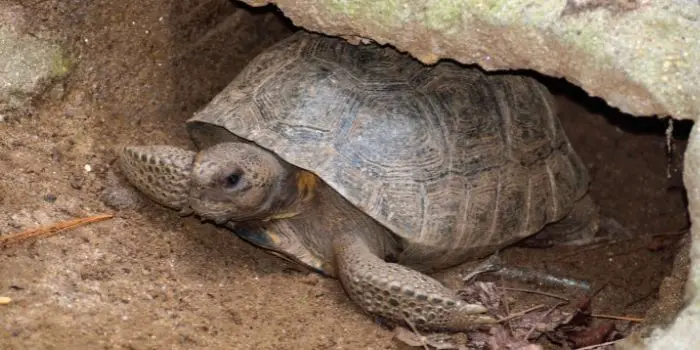
What to Do if You Find a Gopher Tortoise?
Usually, the burrows made by gopher tortoises average about 6.5 feet deep and 15 feet long.
But on the maximum, they can dig burrows as big as 40 feet and 10 feet in depth.
If you find a gopher tortoise digging your yard, the very first thing you should do is do nothing – but leave the burrows alone.
Because any development activity within 25 feet of a burrow is forbidden by law.
1- Be on the Lookout
In other words, take notice before backing out of your driveway, mowing the lawn, or engaging in other activities the location of the gopher tortoise.
Any activity that might otherwise harm a gopher tortoise means you must be extra careful when coming to or leaving your property in a vehicle, mowing your lawn, or operating any heavy equipment.
2- Weed Eater
This is the only lawn maintenance device you can use in direct proximity to the burrow of a gopher tortoise.
You cannot mow, drive a vehicle, or engage in any other activity that might disturb the burrow itself.
A weed eater can be used to trim the grass or weeds that are around the burrow itself, but nothing more.
3- Supervise Your Pets
This may be tricky as dogs, in particular, may spend time investigating the burrow of a gopher tortoise, although they generally present no threat to them.
Still, you must keep your pet away from the burrow if at all possible.
4- Grow Food
Depending on the rules under HOA, you can landscape for gopher tortoises by growing plants that they enjoy consuming.
This includes the following.
- Blackberries
- Blueberries
- Broadleaf grasses
- Gopher apple
- Prickly pear
- Wild grape
You can use such plants to draw the gopher tortoise to a place on your property that is less disruptive for you, your family, and your pets.
By drawing them to such a location, you can mow and landscape the rest of your property less concerned about disturbing a gopher tortoise burrow.
5- Use Repellents
While it’s not an issue to use repellents that are safe, it’s not a legal action if you use harmful chemicals to deter gopher tortoise found on your property (like near the deck).
Since toxic chemicals can be dangerous for them you should not use them near their hole or a fence line to scare them away.
One of my friends reported that he put Bonide near the hole of the gopher tortoise, which he found digging his garden.
Since it’s a non-toxic formula, it served as a good repellent for the tortoise.
Gopher tortoises do not like the smell of mothballs.
So, if you do not want to use chemicals, you can try placing some inside the tunnel entrances.
This will most probably repel the tortoise and help in controlling the tortoise damage.
Remember, once you discover a gopher tortoise burrow on your property, you are legally prevented from destroying it.
You should therefore follow the law, provide adequate protection for the burrow, and consult with local authorities about what to do once the burrow has served its purpose.
It may be possible to have the tortoise removed if there is another person who is licensed to take the tortoise and have them live on their property.

What to Do if You Find a Tortoise on the Road?
Since roadsides (including your driveways) are often sunny and open to visitors, gopher tortoises can be found burrowing near them as they are likely to get food easily there.
However, the sad part is that they are likely to get hit by vehicles, so the mortality rate is often higher for gopher tortoises near the roads.
If you find a hole near the road around your house, it’s good to report the same to your wildlife association or wildlife conservation society.
Until they come and take action for removal, you can help the tortoise, especially when a tortoise tries crossing the road.
This way, you can help avoid gopher tortoise death and road mortality.
Remember that the activity of the gopher tortoise tends to be the highest in the mid-morning and mid-afternoon.
So, if you are crossing the roads or driving a vehicle, scan the road carefully and be alert. Also, observe your speed limits.
While moving, they can be pretty slow, so give them enough time to cross the road first.
If you come across a sick, injured or dead gopher tortoise, do not try to move or relocate them to a different area. This can be dangerous for you.
You should instead report it to your nearby wildlife association team to take the necessary action.
Gopher Tortoise vs. Turtle: What’s the Difference?
Even though turtle and tortoise are both reptiles and belong to the Chelonian family, they are not the same – but different.
Some of the basic differences that tell them apart are as follows:
| Tortoise Vs. Turtle | Tortoise | Turtle |
|---|---|---|
| Dwells | Mainly on land | Mainly in water |
| Shell shape | Mostly large dome-shaped shells | Mostly flat, streamlined shells |
| Shell weight | Heavier | Light-weight |
| Diet | Mostly herbivores and some species prefer live food | Mostly omnivores and prefer fruits, veggies, leafy vegetation, and meat |
| Limbs | Short, sturdy feet with bent legs | Webbed feet with long claws |
| Lifespan | 80-150 years | 20-40 years |
Other Related Questions:
Are gopher tortoises aggressive?
Gopher turtles are docile creatures and their only aggressive behavior is due to mating opportunities and defensive nature against predators.
They occasionally show signs of aggression (like biting, ramming, etc.) to the members of their own species because of the competition for resources.
In most cases, tortoises aren’t dangerous but will try to calm down and pull their head into their shell.
During times of danger, they may also make use of their front legs as a shield of protection.
How many gopher tortoises are left in the world?
At present, the main danger to the survival of the species is their habitat loss.
Due to this increasing threat to the gopher tortoise’s existence, less than a million gopher tortoises are left in the wild.
The Conclusion
A gopher tortoise is an animal that can get stressed very soon if tried to move.
Some of them may get aggressive and can even bite you if threatened.
So, if you find a tortoise in your yard hole or near the road of your house, it’s important to report them and not take action yourself.
After it’s removed, you can take the necessary steps to deter them away, just in case they try to enter your premises again.
Share the post "How to Get Rid of a Gopher Tortoise Digging Your Property?"

Welcome to ProShieldPest.com. I am Tina Jones. I have been working as a pest removal professional in Winslow, Arizona lately. At present, I love to spend my time with my family as a retiree.
Here I share all my knowledge and experiences to help people understand better how they can stop pests at their homes without actually killing them. Hopefully, the information you will find here will help in safeguarding your home! You can check more about me here.

